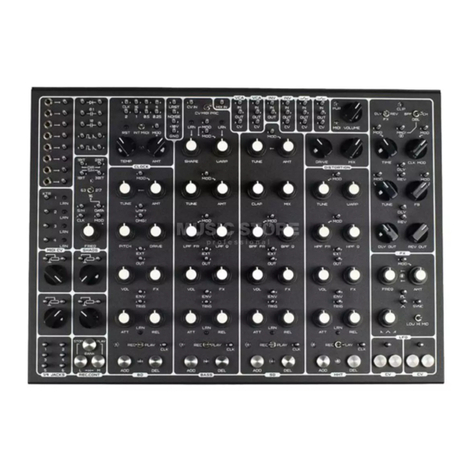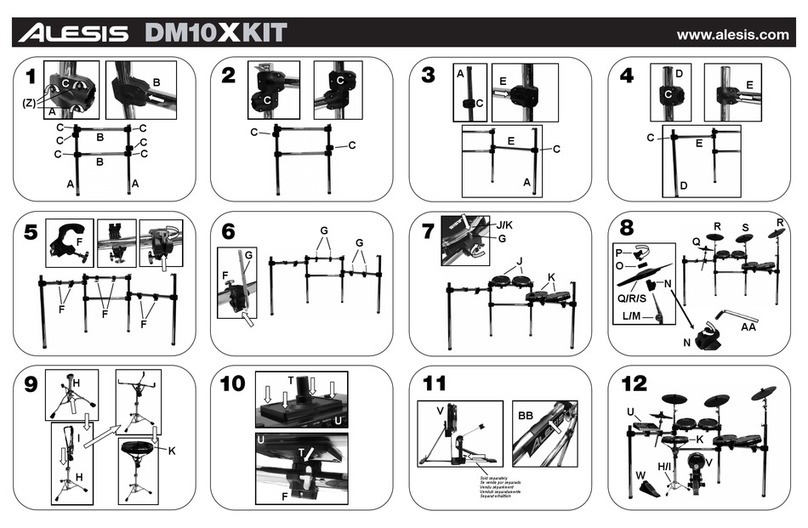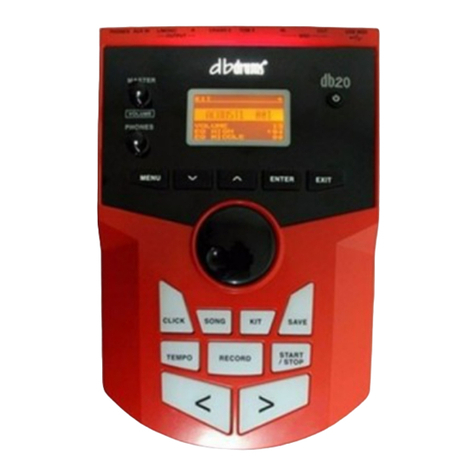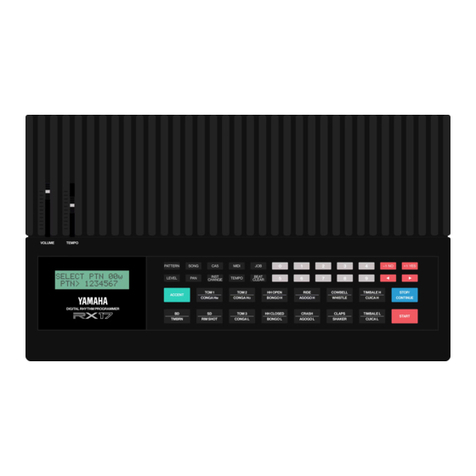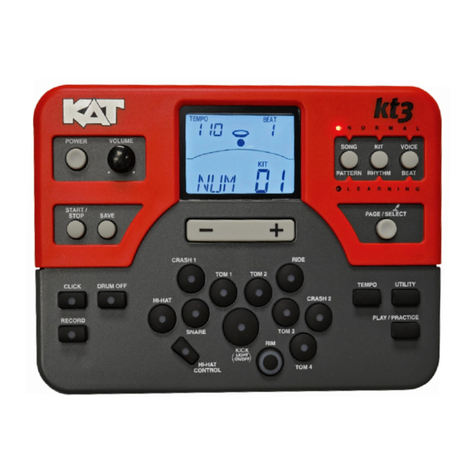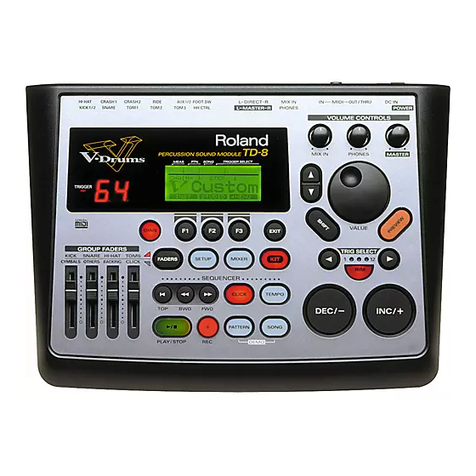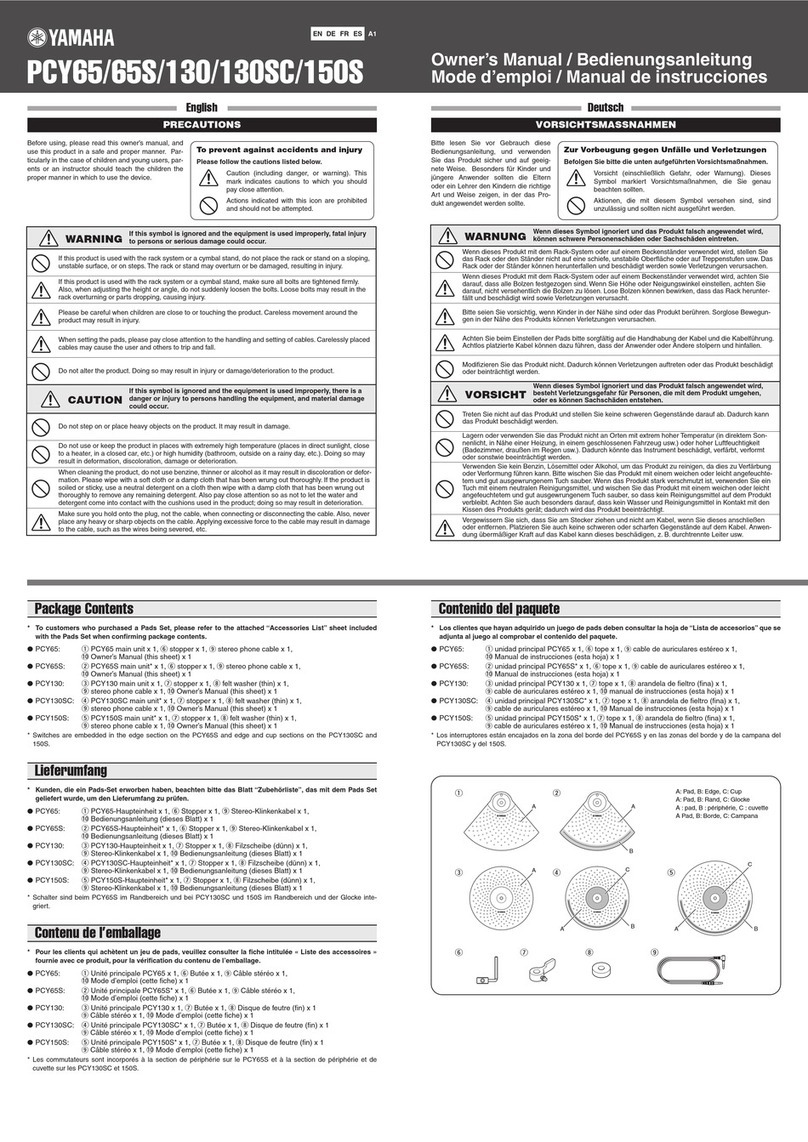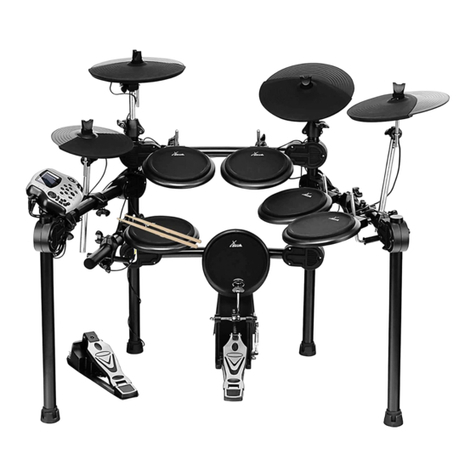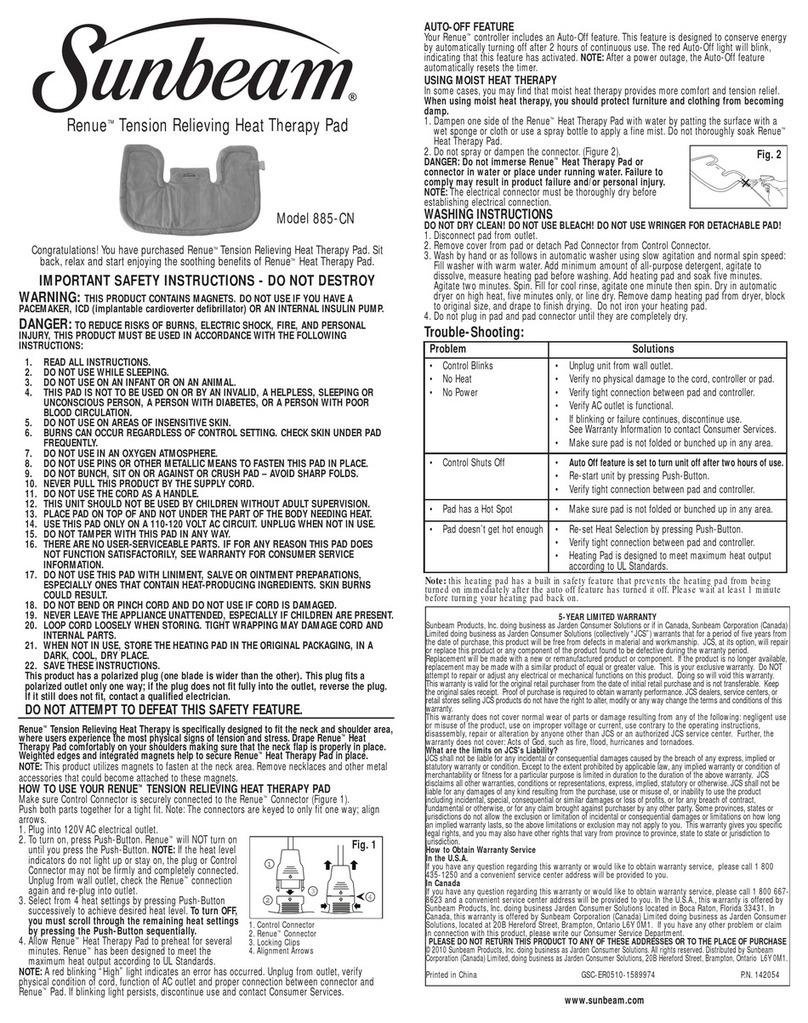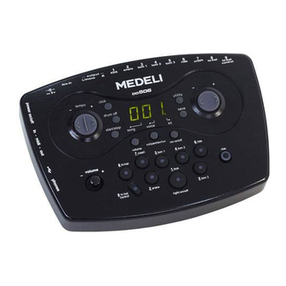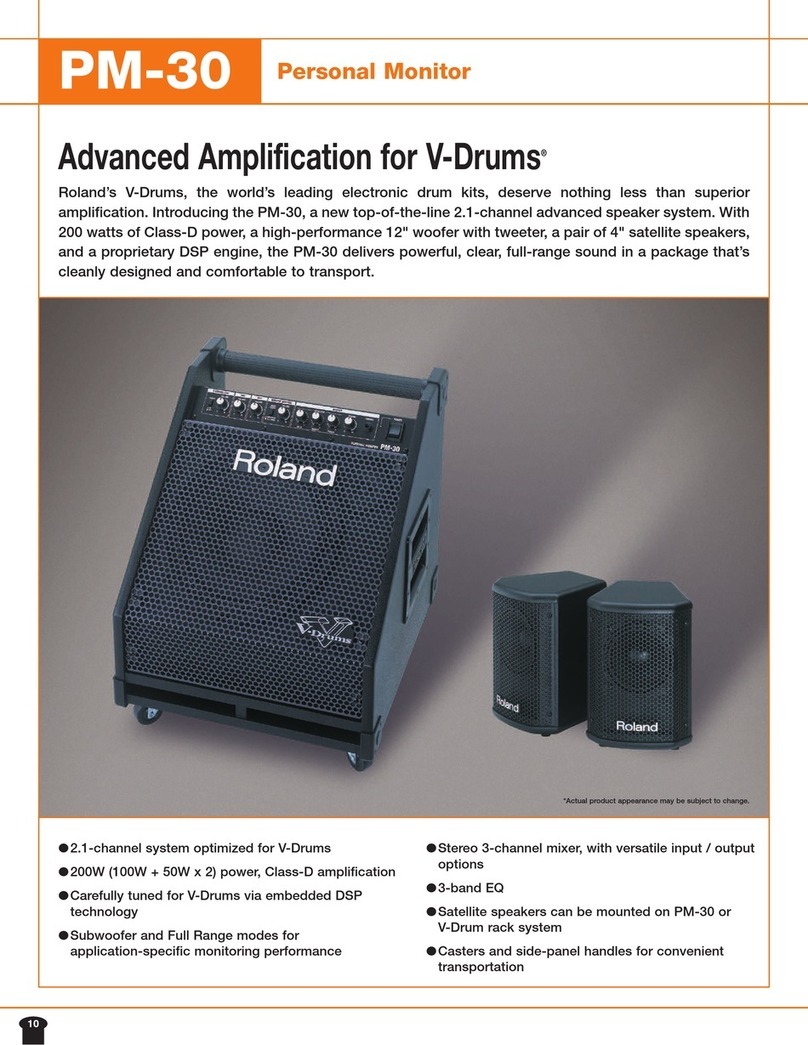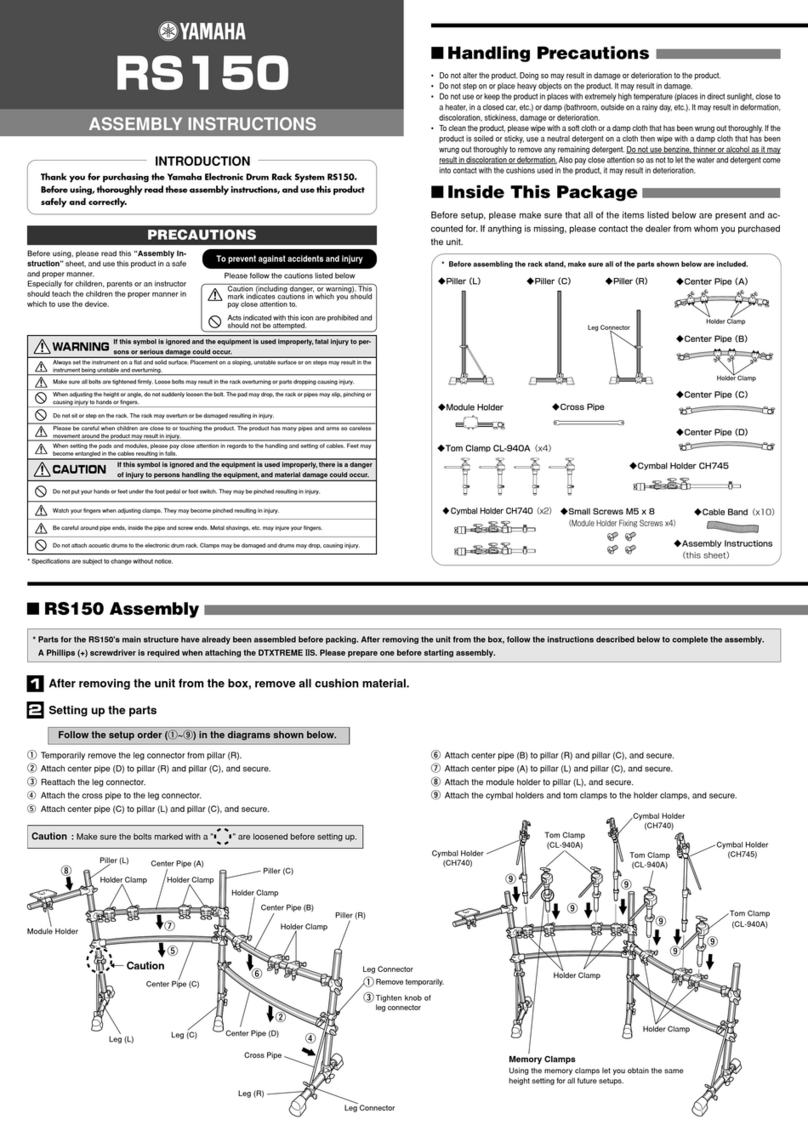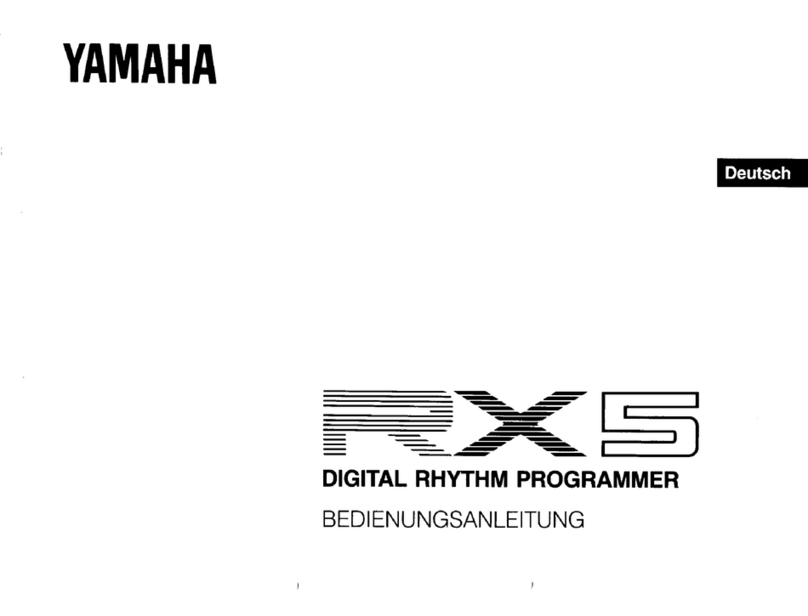SOMA Pulsar 23 User manual

USER
MANUAL

PULSAR•23 USER MANUAL
Pulsar-23 is a complex device with many non-obvious functions and capabilities. To unleash
its full potential, it is strongly recommended to read these instructions.
GENERAL OVERVIEW
Pulsar-23 is a multi-functional analog synthesizer and generator of complex rhythmic patterns.
The Pulsar consists of 23 different modules, including four flexible sound generators with
completely different structures, four envelope generators, four looper-recorders, a clock
generator with dividers, a controlled chaos generator, an LFO, a two-channel CV-controlled
effects processor,distortion, two controlled amplifiers, an inverter, a controlled inverter and
two controlled analog switches.
In addition to these 23 main units, the Pulsar also contains 13 auxiliary units, such as a
four-channel MIDI to CV converter, a noise generator, four attenuators, two dynamic CV
generators with sensory control, two impulse converters and single passive electronic com-
ponents for live circuit bending.
Pulsar-23 can be used for the synthesis of percussion instruments and rhythms, bass and
melodic lines, effects and sound landscapes, as well as a source of control voltage. The Pul-
sar functions in three different modes: stand-alone, MIDI control and CV control. Moreover,
all the above features and control modes can work simultaneously in any proportion or
combination. Additionally, Pulsar offers live circuit bending capabilities and the use of the
artist’s body conductivity to create patches and cross modulations.
Pulsar continues the line of organismic synthesizers begun by LYRA-8, but now in the area
of percussion instruments.
ORGANISMIC SYNTHESIZER
"Organismic" means that some of the principles of how living systems—organisms—operate,
form the basis of development:
• Everything can interact with everything, forming multiple feedback loops, resulting in very
complex behavior of the system, even with a simple set of its constituent elements.
• The blurring of the functions of organs and parts, allowing them to be interpreted differ-
ently, depending on which context and connection they work in.
• The absence of a rigid linear structure, where there is a clearly leading head and the tail
strictly following it. Any part of the body can become for a while both leading and driven.
• The resulting behavior is a dynamic equilibrium spontaneously formed between the inter-
acting parts of the living system.
These principles are most clearly expressed in neurosystems (brain) and systems built on
their basis (for example, human society).
Consider how these principles were implemented in Pulsar:
The Pulsar is a semi-modular system, where each unit has an input, output and several
available control points that can control the processing. The audio and control signals op-
erate in the same voltage range of 0-10 volts, and the inputs and outputs are organized in
such a way that the audio signal can be a control signal, and the control signal can be used
as an audio source. For example, you can use the bass drum channel as an LFO, the LFO as
an additional sound oscillator, the clock generator as a source of percussive sounds, and
the bass synth channel as a clock source for the loopers. This lets you build many different
structures, including paradoxical ones.

PULSAR•23USER MANUAL
You can connect the inputs and outputs of the Pulsar in any combination, without worrying
that something will be damaged or done “incorrectly”. At the same time, due to the smart
organization of the input and output impedance of the connection points, several signals
connected together will be automatically mixed, and the points that can work as input and
output (for example, triggering envelope generators) will figure out on their own what is
connected to them and start to either receive the signal, or send it, or they will begin mutual
modulation if a point with the same behavior is connected.
All inputs and outputs of the Pulsar are ready for integration into a Eurorack system and
are protected from overloads. This means you can do all kinds of experiments with various
sound equipment, without the danger of damaging the instrument. The permissible volt-
age range connected to the inputs of the Pulsar is -20 to +20 volts. However, the effective
operation of the input is limited to a range of 0 to 10 volts.
Without any patching, Pulsar-23 is a drum machine with a sequencer with a conventional
linear structure: clock generator -> looper -> sound modules -> FX -> output. The full
capabilities of the Pulsar are revealed when you start connecting modules to each other,
creating control and modulation channels. Since the number and depth of interactions are
completely under your control, a smooth transition from classical analog drum synthesis to
abstract noise and similar things is possible.
The functions of many Pulsar modules are blurry and can, with different settings and con-
trols, move from one area of sound synthesis to another.
A key feature of the envelope generators and sound modules is that they recognize sustain,
i.e. the duration of pressing the sensor or key on the MIDI keyboard. Thus, with a short press,
we get a percussive sound, the character of which will depend on the length of the press.
When holding the sensor or key for a long time, we get a tonal or noise sound, depending
on the synthesis module used and its settings. Thanks to this, your drum line can suddenly
turn into noise or drone. Also, Pulsar-23 can be used as a powerful and unusual monophonic
synthesizer controlled by MIDI and/or CV.
The LFO and SHAOS modules can be used as sound generators, and in general any voltage
source in Pulsar can be considered a sound source, processing it in various ways and mixing
it into the common mix or using it separately. Just like any audio output, you can use it as a
source of control voltage or modulation. The Pulsar invites you to experiment with an open
mind, free from the dogma of what is what.
ALLIGATOR CLIPS CONNECTION SYSTEM
When I started developing Pulsar, my intention was to make its structure as open as possible
and to put patch points everywhere it made sense. And that meant not worrying too much
about the number of such points. But each plug is a place on the PCB and an added cost.
When the number of connectors exceeds 100 (there are 119 in Pulsar) this becomes a very
significant factor and can significantly increase the size and cost of the device. All existing
solutions were either space-consuming and expensive, or unreliable, which is not accept-
able for an instrument of this class. And then I arrived at the idea of using specially-made
vertical pins and alligator clips.
The benefits of this solution are as follows:
• Saving space. Mounting a pin requires only a few square millimeters on a PCB.
• Low manufacturing cost.
• Extreme reliability, since with such a simple design there is simply nothing to break. It's
just a ribbed metal pin to make it easy to attach the clips.
• You can connect several clips to one pin, hereby multiplying or combining signals.
• Two alligator clips can be connected together if you don't have enough cable length.

PULSAR•23 USER MANUAL
• You can carry out a lot of experiments by connecting alligator clips to various radio com-
ponents, parts of electronic circuits (for example, an old radio), touch plates and even take
two forks with connected alligator clips, plug them into a cucumber and listen to how it
sounds in the snare drum synthesis chain:). All of these connections will become parts of
the Pulsar circuit, which is very sensitive to such inclusions.
• You can easily connect to connectors such as jack, mini-jack and banana by simply attaching
an alligator clip to the signal pin of the connector.
• Ready-made cables with alligator clips are easy to buy and they are signicantly cheaper
than regular audio cables.
This non-standard solution offers so many advantages that we settled on it, despite its
unconventional nature.
At the same time, we made sure you can also connect to the usual formats — the Pulsar
has eight freely assignable 3.5 mm mini-jacks and six freely assignable 1/4-inch jacks. MIDI
input is implemented with a standard DIN connector.
LIVE CIRCUIT BENDING
A number of Pulsar patch points are more than just CV control inputs. Some of the points
commonly used for circuit bending have been brought out, which allows you to wedge into
the circuit, changing its behavior on the fly. You can use single electronic components, such
as a resistor, capacitor, diode or transistor, including them in a control or modulation circuit
to get different behaviors and sound.
The patch-point design and specially calculated input impedance make it easy to use the
artist’s body as a connecting cable. By touching various contacts and closing them togeth-
er during the performance, you can create quick and dynamic changes in the sound and
behavior of the Pulsar. Since the resistance to contact with the skin strongly depends on
the pressure, you can easily and intuitively change the modulation depth with simple hand
movements, controlling several points at once.
SOUND MIXING CONCEPT
When developing Pulsar, I found it pointless to do internal mixing in stereo. In order to get
a good stereo picture in a drum machine, you must either have many different instruments
diluted in the panorama (usually percussive sounds), or use individual spatial effects super-
imposed on individual sounds. In Pulsar, instead of making a lot of specific, little controlled
sound generators (tom1, tom2, cowbell, clap etc.) like in classical drum machines, there are
only four yet powerful and flexible generators. The sounds of three of them, focused on the
synthesis of bass drum, snare drum and bass, are usually placed in the center. Therefore, it
turns out that there is nothing special to pan.
As a result, it was decided to make the summing bus and the main audio output monophonic,
but at the same time provide the opportunity for full external mixing, where you can create
a good stereo picture using external spatial effects.
Therefore, everything that can produce sound in Pulsar has a separate output contact. These
contacts can be assigned to any of the six 1/4-inch jacks or any of the mini-jacks, allowing
separate sounds to be processed by external stereo effects and fed to an external stereo
mixer, or channel-recorded in a DAW for further processing and information.
The output contacts of the sound generators and the “send” to the FX processor are located
before the volume knob, so you can easily exclude any sound from the main mix and assign
it to external mixing and processing.
The effects processor also has separate output pins for each of the two channels and can
produce a stereo signal that you can use for further stereo mixing.

PULSAR•23USER MANUAL
MIDI
The Pulsar has significant capabilities to be controlled via MIDI.
MIDI controls have:
• Dynamic trigger of all four synthesis modules, taking into account velocity.
• The BASS module recognizes pitch bender (the range is +/- 12 semitones) and portamento
(CC05).
• MIDI controllers can be assigned to SHAPE and WARP synthesis parameters of the BASS
module.
• The Pulsar can receive MIDI clock which can synchronize the array of clock dividers and the
looper\recorder. To do this, turn the INT MIDI switch of the clock section to the MIDI position.
• There are four MIDI to CV converters (MIDI CV block) capable of converting messages from
MIDI controllers and keyboards into CVs. The converter outputs can then be connected to
any Pulsar input contacts, which will provide MIDI control or automation of the functions
connected to these contacts.
The intention was to make the MIDI implementation as user-friendly as possible. Next to
each function that has MIDI automation there is a learn (LRN) button, which makes it easy
to assign a MIDI controller there. To do this, press the LRN button next to the desired func-
tion and turn the midi-controller or press the key on the midi-keyboard that you want to
assign there. The Pulsar will remember the channel number, key or controller number (CC)
and will remember them even when the power is off.
Altogether there are 12 parameters that can be automated via MIDI:
Triggers of the 4 synthesis modules, 4 freely assignable MIDI to CV converters, SHAPE,
WARP, Portamento and Pitchbender functions of the BASS module.
To assign a MIDI controller (a key or a continuous controller) to a synthesis module
(BD, SD, HHT etc.) hold the LRN button of this module and press the desired key or
turn the controller.
The pitchbender and portamento functions are firmly fixed to the corresponding mi-
di-controllers. The receiving midi-channel number of these functions is the same as
the midi-channel number of the keyboard assigned to BASS. Portamento can only be
adjusted via MIDI.
The synthesis modules and MIDI to CV converter automatically recognize the key and
the continuous controller (CC). In case a MIDI keyboard key is assigned, the velocity
value of the pressed key will be transmitted. If a controller is assigned, the position of
the controller is transmitted.
You can control the synthesis module trigger with a continuous controller instead of
by pressing a key. This will give you many unusual features, such as drawing the attack
and signal decline in a DAW. To do this, use the LRN button of the desired module and
assign a continuous controller to the module you need.
You can assign MIDI keys to a MIDI to CV converter, this will give you the opportuni-
ty to rhythmically control various synthesis parameters (for example, a filter) from a
MIDI keyboard and apply functions such as quantization, which are difcult to use with
a continuous controller.
If any key is assigned to the first channel of the MIDI to CV converter with the same MIDI
channel as the MIDI keyboard assigned to the BASS module, the key tracking signal of the

PULSAR•23 USER MANUAL
BASS module will be sent to the output of the first channel of the converter. The CV on this
output will be proportional to the note number that is currently played by the BASS module.
This function is very useful if, for example, you want the cutoff frequency of the lter to
follow the pitch of the note being played. To activate this function, simply simultaneously
press the LRN button of the first channel of the converter and any key on the MIDI bass
keyboard. The first channel of the converter is marked KTR (key tracking).
Please remember that the looper-recorder has a clock up-sampling process that needs
a little time for setting. The first few dozens of milliseconds after MIDI clock start can
be inaccurate. To avoid this, the timespan between stop and start on your DAW or
sequencer that feeds MIDI-clock to Pulsar, has to be at least 5 seconds (then the
up-sampling system stops to wait for the next clock pulse and saves the previous
value that will be used after clock start).
A second option is to use the LRST pin for alignment with the clock divider.
When using MIDI-clock synchronization, we strongly recommend connecting the LRST
pin to 0.25 out of the clock divider to ensure a perfect sync.
Pressing simultaneously the SHAPE and WARP LRN buttons will stop all MIDI trigger-
ing. You can use it as a MIDI panic button if your MIDI system freezes.
GENERAL LABELING PRINCIPLES
Contact function marking:
The arrows connecting the various elements indicate their relationship and show the di-
rection of the signal flow.

PULSAR•23USER MANUAL
MAIN MODULES
MASTER CLOCK GENERATOR
The basic structure of the Pulsar begins with a master clock gener-
ator. When creating a patch, you can make the source of the clock
something else and even have several sources at the same time.
The clock generator sets the tempo of your rhythmic pattern, as well
as the looper/recorder's loop length, which is four measures in four
quarters or 128 ticks of the clock. One tick equals a 32nd note. At
the same time, you can freely choose what constitutes one quarter
and the length of your measure, since there is no quantization by
default in the looper.
TEMP knob. Sets the generator clock frequency, which varies from one to two hundred hertz,
thus determining the looper's loop length from several minutes to less than one second.
The green LED ashes once a quarter and makes a bright ash at the beginning of the loop
(based on the fact that the loop length is four measures in four quarters).
MOD pin. CV input modulating and controlling the clock frequency. The useful voltage
swing, as with all modulation inputs, is 0 to 10 volts.
AMT knob. Determines the amount of influence of CV applied to the MOD pin on the clock
frequency.
INT MIDI switch. Allows you to select the clock source. In the INT (internal) position, the
source is the Pulsar clock generator. In the MIDI position, the source is an external MIDI
clock. With the switch in the middle position, the internal clock is disabled and the array of
dividers and the looper stop. Now, when voltage pulses with an amplitude of at least 3 volts
(nominal amplitude 0 to 10 volts) are applied to the CLK pin, they will be perceived as a
clock signal and the array of dividers together with the looper will be synchronized to it. So
you can synchronize the Pulsar with a Eurorack system or any device that generates a clock
in the given voltage range. The frequency of the supplied external analog clock should be
calculated for 128 ticks per full length of the array of dividers and looper. If the switch is in
the INT or MIDI position, you can pick up the clock signal from the CLK pin or the outputs
of the clock divider to synchronize external equipment to the Pulsar.
CLK pin. The output of the clock generator or the clock input of the frequency dividers and
looper/recorder.
With the switch set to INT or MID, the pin works as the output. With the switch in the middle
position, it functions as input. (see "INT MIDI Switch")
16, 8, 4, 2, 1, 0.5, 0.25 pins. The outputs of the array of binary clock dividers. A very pow-
erful tool for creating rhythms and controlling various Pulsar modules. The number under
the pins represents the note duration that this output gives. The looper's loop length is
equal to the length of the array of clock dividers.
RST (reset) button. Resets the array of clock dividers and resets the looper to the beginning
of the loop. Used to set the start of the loop and to synchronize the dividers and looper.
It is recommended that you press the RST button before starting loop recording. This will
guarantee synchronization between the looper and the dividers.

PULSAR•23 USER MANUAL
You can connect several outputs of the divider together. The signals will automatical-
ly be summed and you will get a complex rhythmic pattern based on this sum.
You can use the signal from the outputs of the divider to create the sound of a met-
ronome. To do this, connect the desired output of the divider (if the loop length is 4
steps of 4 quarters to obtain 1/4 duration, use output 2) with the input of one of the
attenuators (for the possibility of adjusting the volume of the metronome) and connect
the attenuator output to MIX IN input.
To quickly get the metronome sound, simply touch one nger of your left hand to
output 2, and the other to the MIX IN input. The circuit will be created using body
conductivity.
You can use outputs 16, 8, 4, 2, etc. to create a line of hi-hat, bass drum, etc. with
equal notes. To convert a rectangular signal into short pulses, which form the distinct
sound of the drums, use one of the impulse converters (see the corresponding sec-
tion).
You can use one or several summed outputs of the clock divider array to modulate the
clock frequency, thus creating shufe and more complex uneven ripples.
LOOPER-RECORDER
One of the features of the Pulsar is that it has no conventional sequencer, and instead
a looper-recorder (LR) designed by the author. The main idea behind the LR is to enable
quick and convenient creation and editing of live grooves "on the y", exible improvisation
options during performance, and the possibility of experimenting with loops of different
lengths and speeds on the different LR channels.
Pulsar's LR has 4 independent channels, each of which can have its own, independent play-
back speed. In order to be able to switch between different rhythmic variations, there are 4
banks of loops, each of which contains a set of 4 loops (a loop for each synthesis module).
You can switch banks anywhere in the loop, creating rhythmic variety.
Unlike a sequencer, which records the time of the trigger event, the LR is essentially a virtual
tape that constantly records all manipulations with the ADD and DEL sensors, taking into
account the velocity specified by the sensors of the REC.CONT (recorder control) section. It
does not record manipulations of the knobs and switches, or incoming MIDI events and CV
signals. In line with the concept of Pulsar, LR is not a piece of code in the general proces-
sor that controls everything. Instead, it's an independent module executed on a separate
micro-controller that deals only with this specific task. Thanks to this, it provides excellent
stable behavior without delays and glitches, similar to the behavior of analog and mechan-
ical devices.
While LR has a basic quantize option for individual LR channels, it does not allow for step-
by-step editing of a rhythmic pattern. In our opinion, any portable sequencer with a min-
iature screen is significantly inferior in terms of ease of use and functionality compared to

PULSAR•23USER MANUAL
a sequencer and an editor based on a personal computer. Therefore, if you need precise
control over each beat, we suggest using a computer sequencer (Cubase, Ableton, Protools
etc.) connected to the Pulsar via the MIDI interface. Rather, the capabilities of LR are con-
centrated on high quality and making live performances more convenient. To achieve this,
data processing and storage are carried out with a resolution that significantly exceeds
standard requirements. For example, the frequency of polling sensors and outputting a sig-
nal to sound-synthesizing modules is 110 kHz, which is 2.5 times higher than the standard
frequency of digital audio and 36 (!) times higher than the MIDI frequency interface. The
recording resolution is 96 events per pulse of the clock signal, which for a standard situation
is 192 events per sixteenth note. In combination with the author's analog circuitry of ca-
pacitive sensors, providing a response time of 0.01 milliseconds, this gives Pulsar an almost
instantaneous response to touching the sensor and a full-fledged “live” playing experience,
characteristic of acoustic instruments.
It is also worth noting that the LR architecture allows you to record the duration of notes
and dynamic changes within a single note arising from manipulations with REC.CONT
sensors.
The speed of the virtual LR tape is determined by the frequency of the incoming clock. The
loop length is xed and equal to 128 clock pulses. However, the loop length can be made
shorter if a forced restart of the LR is done more than once for 128 clock pulses. This will be
described in detail below, when explaining the LRST function. One clock pulse is a 32nd note
(1/32 of measure). To ensure a high resolution of the recording, LR upsamples the incoming
clock, multiplying its frequency 96 times. The upsampling procedure imposes certain spe-
cifics on the LR operation. In particular, if you want to modulate or change the clock during
performance and at the same time preserve the synchronization of the LR and the dividers,
you must use the synchronization pin LRST, which will be described below.
By default, the clock for LR is taken from the internal clock generator, which can either work
independently or receive a MIDI clock (selected by the INT MIDI switch).
The Pulsar's LR has four independent channels (one for each sound generator), each of which
has its own independent memory and can have its own independent clock. This provides
a unique opportunity to play various LR channels at different speeds, creating complex
rhythmic patterns and going beyond repeating patterns. An individual clock is fed to the
CLK pins (see below).
Control the LR by using the capacitive sensors that are triggered by the touch of a finger
or any conductive object that has sufficient capacity.
LR memory is volatile. When the Pulsar is turned off, the contents of the memory are reset. It
is not possible to upload the contents of LR into external memory or download data into LR.
ADD sensors —Add notes to LR loops. Unlike most drum machines, Pulsar recognizes and
records not only the start time of a note, but also its length, which blurs the line between
the synthesis of percussion sounds and ordinary synthesis, allowing you to make a smooth
transition from rhythmic parts to noise and drone soundscapes.
If the REC PLAY switch is in the REC position, ADD will operate in overdub mode, i.e. new
notes will be superimposed on already recorded notes. The velocity of recorded notes can
be determined by the sensors L (low) and M (middle). By default, the velocity of recorded
notes is maximum.
If the REC PLAY switch is in PLAY mode, touching the ADD sensor will play notes on top of
those recorded in the LR, but the contents of the loop will not change.
If the REC PLAY switch is in the middle position (MUTE) or the clock is stopped, the ADD
sensor will simply trigger the corresponding sound generator.

PULSAR•23 USER MANUAL
DEL sensors — Erase notes from LR loops.
If the REC PLAY switch is in the REC position, the DEL sensor deletes notes from the cor-
responding loop.
If the REC PLAY switch is in the PLAY position, the DEL sensor will mute the recorded notes
without changing the contents of the loop.
When in the REC mode, holding DEL while touching ADD to play, will record a new
part, while the already recorded notes will be erased (punch-in record mode). If you
do the same in PLAY mode, the performance will be played on top of the muted re-
corded part. In this case, the contents of the loop will not change.
REC PLAY switch — determines the operation mode of the LR channel.
REC — recording in a loop is done while playing back already recorded notes. PLAY — plays
back recorded part. Middle position mutes the loop, but it keeps moving according to the
incoming clock.
CLK pins are individual clock inputs for each LR channel.
If you connect something with a low output resistance, the internal clock will be automatically
turned off and replaced by the incoming signal. Synchronization occurs along the rising edge
when the signal exceeds the level of 2 volts. CLK inputs can work with any type of signal:
digital, analog, periodic, aperiodic, noise, etc. Thanks to hardware and software protection,
any reasonable experimentation with CLK inputs will not cause the LR to freeze or crash. This
opens up great opportunities for creating aleatoric compositions and experimental rhythms.
TRIG (trigger) pin — LR channel output and envelope generator input.
LRST pin (looper restart)—applying a positive impulse (rising edge) to this pin will cause
LR to restart from the zero position.
This function is needed for synchronizing the LR with the array of clock dividers, and it can
be used for shortening the loop length. Naturally, this pin can also be used for all kinds of
experiments.
For tight LR synchronization with the array of clock dividers, connect the LRST pin to the 0.25
divider output. This connection will ensure the synchronization of the LR and the divider in
the case of modulation of the clock frequency, restart of LR from different positions, etc. Such
synchronization may be necessary if you generate part of the rhythmic behavior (for ex-
ample, control filters and other synthesis parameters) with the divider, and the other part
plays from the looper/recorder. Also, such synchronisation is strongly recommended if you
use MIDI-clock. Actually, if you have no intention to make asynchronous beats, it's better
to keep the LRST and 0.25 pins always connected.
You can make the LR loop length shorter if you connect the LRST to the lower output
of the divider (0.5, 1, 2, 4, etc.)
Please remember that the LR has the clock up-sampling process that needs a little
time for setting. The first few dozens of milliseconds after MIDI clock start can be
inaccurate. To avoid this, the timespan between stop and start on your DAW or se-
quencer that feeds MIDI-clock to Pulsar, has to be at least 5 seconds (then the up-sam-
pling system stops to wait for the next clock pulse and saves the previous value that
will be used after clock start).
A second option is to use the LRST pin for alignment with the clock divider.

PULSAR•23USER MANUAL
BLOCK REC.CONT (RECORDER CONTROL)
This is the looper/recorder control unit. It consists of three multi-function
sensors: L, M, BANK,
L M sensors — allow you to set the velocity of recorded or played notes.
L (low) — lowest velocity.
M (middle) — medium velocity.
L + M (high) — simultaneous pressing will cause maximum velocity.
In REC mode, the L M sensors let you set the volume of notes recorded by the ADD sensor.
If neither L nor M are pressed, the recording velocity is maximum.
In PLAY mode, the L M sensors let you set the volume of notes played by the ADD sensor
and modify the volume of notes recorded in the LR.
BANK sensor in combination with the ADD or DEL sensors — switches the LR banks.
Each of the four LR channels is also associated with one of the four banks of loops.
To switch bank: while holding BANK, press ADD or DEL of the desired channel.
The activated bank is indicated by a lit yellow LED.
It is possible to partially or fully copy the contents of banks into each other. To do this, hold
BANK and press ADD + DEL of the channel you want to copy to. The bank will switch over
while copying the contents of the previous bank to the selected bank. Copying occurs on
the fly, i.e. without stopping playback and does not interrupt the play process.
Сopying will be performed only on those channels where the recording mode is turned on.
Copying occurs exactly as long as the combination of three buttons is held. If you need to
copy the entire loop, you must hold this combination for at least the length of the entire
loop of the looper. You can also copy the loop partially, holding the combination only for the
desired fragment. This allows you to mix fragments from different banks. When copying,
the previous contents of the bank are erased.
BANK + L (stop) — stops the LR.
BANK + M (start) + one of the ADD or DEL sensors —starts or restarts the LR from the
specied position. The LR loop is divided into 8 equal parts. Each part is associated with
one of the 8 ADD and DEL sensors. By pressing BANK + M and the desired sensor, you can
start the loop from that section. If LR is already running, it will restart from the specified
position. This allows for non-integer measures and changing rhythmic patterns.
BANK + L + M + one of the sensors (ADD or DEL) of the desired LR channel — will
quantize the content of the channel to 16 notes. The LR will stop when this operation is
performed. To start it again, use the start function. For the quantize function to work cor-
rectly, please make sure that the LR is aligned with the clock dividers!! To do this, press the
RST button on the CLOCK module before recording, and\or connect the LRST pin to the
0.25 output of the clock divider, and use a metronome during the recording!

PULSAR•23 USER MANUAL
AR ENVELOPE GENERATORS OF SYNTHESIS MODULES
All synthesis modules (BD, BASS, SD, HHT) have the same envelope
generators with two control parameters — Attack (ATT) and Release
(REL). The input of the generator is connected to the output of the
looper/recorder, the output of the MIDI converter and the TRIG pin. All
three sources of the trigger signal can be used simultaneously, but the
envelope generator will respond only the strongest signal. For example,
if one source sends 2V, a second sends 5V and a third 7V, the EG will respond to the 7V
source. If that signal stops, the EG starts to respond to the 5V source instead. If that turns
off, it will respond to the 2V source.
AT T (attack) knob — adjusts the attack of a given drum sound.
REL (release) knob — adjusts the release of a drum sound.
TRIG (trigger) pin — LR channel output and envelope generator input.
ENV (envelope) pin — Envelope generator output.
You can use any of the channels of the looper/recorder and the envelope generator
attached to it, regardless of its synthesis module. For example, you can create a CV
signal with complex behavior, using an EG. This complex CV signal you can get from
the ENV pin.
Like many of Pulsar's inputs, TRIG inputs are touch sensitive. Try to touch the TRIG
pins with one hand and the clock divider outputs, SHAOS, LFO outputs, etc. with the
other.

PULSAR•23USER MANUAL
BD (BASS DRUM)SYNTHESIS MODULE
Designed for synthesizing the sound of a bass drum. Like other synthesis
modules, it can be used to generate a fairly wide range of sounds.
It should be noted that all synthesis modules have a different structure
and that their sound palettes do not intersect for this reason.
TUNE knob — controls the pitch of the BD.
MOD (modulation) pin — is the input modulating the pitch of a BD.
This input has a linear (volt-hertz) relationship.
AMT (amount) knob — adjusts the amount of influence of the MOD
signal on the pitch.
WTF? pin — circuit bending node for the pitch modulator.
OMG! pin — circuit bending node for the triangle waveform generator that forms the base
of BD synthesis.
PITCH knob — controls the modulator that generates the pitch jump at the beginning of
a sound, characteristic for a bass drum. This knob adjusts the decay rate and the depth of
the modulation.
DRIVE knob — controls the BD waveform. When rotated clockwise, the waveform changes
from triangle to sine to square.
EXT (external) pin —is the input for processing an external signal through the BD synthesis
circuit. Located before the waveshaper/distortion that makes the waveform.
OUT pin — is the output of the BD synthesis module. Located before the VOLUME knob.
VOL (volume) knob — BD volume control
FX knob —adjusts the send level of the BD signal to the effects processor. It takes the signal
before the VOL knob (pre-fader). This way you can send a signal to the effects processor
while the BD volume in the main mix is low or zero.
Try modulating the BD pitch with noise (use NOISE pin).
You can create an additional pitch drop typical of a hip-hop style BD by connecting
the ENV and MOD pins and setting the AMT knob.

PULSAR•23 USER MANUAL
BASS SYNTHESIS MODULE
The BASS synthesis module is a powerful monophonic synthesizer with
two modes of operation—classic monophonic synthesis and percussion
synthesis of the author’s architecture. This allows you to create a wide
range of sounds, such as bass, lead, various types of low-frequency
and high-frequency percussion, and sound effects. In monophonic
synthesis mode, the pitch can be controlled by MIDI and CV (standard
1V/octave logarithmic dependence).
The synthesis module has a hybrid architecture: a digitally controlled
oscillator (DCO) followed by an analog processing chain containing
a low-frequency resonance lter (LPF) with saturation mode, a volt-
age-controlled amplifier (VCA) and an envelope generator.
A DCO is built on unique authoring algorithms of pure mathematical
synthesis making the sound and behavior of DCO close to analog. Most
digital synthesizers use wavetables to generate waveforms, which gives
the sound a characteristic digital deadness and stillness caused by the
fact that we essentially have a rompler that reproduces the same thing
all the time, and not a synthesizer that has natural living breath and
many small nuances. The DCO in Pulsar does not contain any tables
and instead generates waveforms through special recursive equations,
computing with very high accuracy (32 bit with floating point). This
makes our DCO sensitive to the smallest changes in control signals
and gives the sound a vibrant breath inherent to analog synthesis.
In addition, all DCO controls, except for MIDI, occur through analog
circuits, which also brings its behavior closer to analog.
CV IN pin is a logarithmic (volt-octave) input that allows you to control the pitch of a
note with a standard CV signal. It has an input voltage range of 0-4 volts (four octaves).
CV MIDI PRC switch — selects the DCO mode of operation. CV– CV control. MIDI— MIDI
control. PRC — synthesis of percussive sounds.
SHAPE knob — is a DCO synthesis parameter that controls the waveform. When turning
clockwise, the level of harmonics increases.
MOD pin associated with SHAPE: CV control of the SHAPE parameter.
WARP knob —sets the amount of loading of the waveshaper, located after the oscillator.
MOD pin associated with WARP: CV control of the WARP parameter.
In PRC (percussion) mode, the SHAPE and WARP knobs control many synthesis param-
eters at once, a clear description of which would take up too much space. Therefore, it is
easier to explore this experimentally.
TUNE knob — oscillator pitch settings. In MIDI mode it has a range of +/- 1/2 tones, in
other modes it has a range of 5 octaves.
MOD pin associated with the AMT knob: CV control of the phase modulation of the DCO.
In PRC mode it becomes sidechain input.

PULSAR•23USER MANUAL
AMT (amount) knob — determines depth of modulation by the signal received on the
MOD pin.
LPF FR (low-pass filter frequency) knob — controls the cutoff frequency of the reso-
nant low-pass filter.
MOD pin associated with the LPF FR knob: CV control of the lter cutoff frequency.
LPF Q knob — controls the resonance level of the low-pass filter.
EXT (external) pin is the input for processing an external signal through the BASS syn-
thesis circuit. Located before the low pass filter.
OUT pin — output of the BASS synthesis module. Located before the VOLUME knob.
VOL (volume) knob — BASS volume control.
FX knob — adjusts the send level of the BASS signal to the effects processor. It takes the
signal before the VOL knob (pre-fader). This way you can send a signal to the effects
processor while the BASS volume in the main mix is low or zero.
Regardless of DCO mode (CV MIDI PRC), this module can always be triggered via MIDI.
In CV and PRC mode, only one note on the MIDI keyboard can be associated with the
module using the learn function (LRN button above the sensors of the BASS module).
In MIDI mode, it will be a chromatic MIDI keyboard. If, in PRC mode, the MIDI channel
tied to BASS does not coincide with the MIDI channels of the rest of the synthesis
modules, it also works as chromatic MIDI keyboard where you can change the pitch of
the note.
You can control the portamento parameter through the standard portamento midi
controller (CC05).
If you assign any key of the MIDI keyboard assigned to BASS to the first channel of
the MIDI to CV converter, the key tracking signal associated with this MIDI keyboard
appears at the output of the converter.

PULSAR•23 USER MANUAL
SD (SNARE DRUM AND CLAP)SYNTHESIS MODULE
The SD synthesis module is focused on producing the sound of a snare
drum and a clap, while remaining, like all Pulsar sound modules, flexible
enough to synthesize a wide palette of sounds that goes far beyond
the classical snare drum. The heart of this module is a noise generator
of original design with a controlled spectrum, which largely determines
the characteristic sound of the Pulsar snare drum.
TUNE knob — adjusts the spectrum of the noise generator.
MOD (near the TUNE and AMT knobs) pin —CV input for controlling
the noise spectrum.
AMT (amount) knob—sets the amount of influence of the CV received
on the MOD pin.
CLAP knob—creates a clap sound by splitting the attack of the sound.
MIX knob —determines the balance between pink and spectral noise.
BPF FR (band-pass filter frequency) knob — determines the cutoff
frequency of the band-pass lter.
MOD (near the BPF FR knob) pin is the CV input that controls the BPF cutoff frequency.
BPF Q (band-pass filter resonance) knob — determines the level of self-oscillation of
the filter.
EXT (external) pin is the input for processing an external signal through the SD synthesis
circuit. Located before the band-pass filter.
OUT pin is the output of the SD synthesis module. Located before the VOLUME knob.
VOL (volume) knob — SD volume control.
FX knob — adjusts send level of the SD signal to the effects processor. Takes the signal
before the VOL knob (pre-fader). This way you can send a signal to the effects processor
while the SD volume in the main mix is low or zero.
Use a band-pass filter on the verge of self-oscillation (set by the BPF Q knob) to cre-
ate the characteristic resonance of the snare drum body.

PULSAR•23USER MANUAL
HHT (HI-HAT)SYNTHESIS MODULE
A module designed to synthesize the sound of a hi-hat, cymbal or
shaker.
TUNE knob — adjusts the spectrum of the noise generator.
MOD (near the TUNE knob) pin — CV input controlling the noise
spectrum.
WARP knob is a waveshaper that changes the noise spectrum.
HPF FR (high-pass filter frequency) knob — determines the cutoff
frequency of the high-pass lter.
MOD (near the HPF FR knob) pin is the CV input that controls the
HPF cutoff frequency.
HPF Q (high-pass filter resonance) knob — determines the amount of self-oscillation
of the filter.
EXT (external) pin is the input for processing an external signal through the HHT syn-
thesis circuit. Located before the high-pass filter.
OUT pin is the output of the HHT synthesis module. Located before the VOLUME knob.
VOL (volume) knob — HHT volume control.
FX knob — adjusts send level of the HHT signal to the effects processor. Takes the signal
before the VOL knob (pre-fader). This way you can send a signal to the effects processor
while the HHT volume in the main mix is low or zero.
To create the sound of a shaker, set the WARP knob to more than 60% and make a
soft attack with the ATT knob.

PULSAR•23 USER MANUAL
SHAOS PSEUDO-RANDOM GENERATOR
This is a generator of complex pseudo-random signals of the author’s de-
sign, built on the basis of shift registers. Hence the name SHIFT + CHAOS
= SHAOS. It consists of a clock generator, a shift register with a feedback
circuit generating a pseudo-random sequence, along with a sample and hold
unit that allows sampling from a pseudo-random sequence, synchronized
to an external signal.
FREQ (frequency) knob — controls the clock frequency of the SHAOS
synthesis.
MOD (modulation) pin — CV input that controls the clock frequency (FREQ
parameter).
CLK (clock) pin — input intended for connecting an external clock. When a source with a
low output resistance is connected to this pin, the internal clock is automatically turned
off and replaced with the external one.
S/H (sample and hold) pin — input for external pulses. With each impulse applied to
the S/H pin, the pseudo-random seq will be sampled and held. The S/H function will be
synchronized to impulses applied to the S/H pin. If nothing is connected to the S/H pin,
sampling and holding are performed in sync with the internal clock of the module. When
a source with a low output resistance is connected to this pin, the internal clock is auto-
matically turned off and replaced by the external clock signal.
63 16 217 switch — determines the length of the pseudo-random sequence. It can be
equal to 63, 16 or 217 pulses of the internal or external clock.
DATA pin - can be used to write a sequence to the memory of shift registers. When the
switch 63 16 217 is in position 16, the shift registers turn into a cyclic memory, into which
you can write a short sequence of states using the DATA pin. In the simplest case, connect
a wire to this pin and short-circuit it to the +10V and GND contacts, or simply move the
switch from the edge positions to the center (16). Doing this records various sequences
in the cyclic memory, which will be played in sync with the incoming clock.
1BIT DIR pin is the 1bit output of the pseudo-random sequence without sample and hold
(direct). It works regardless of the incoming sync signal sample and hold. The signal has
two states (1bit resolution).
2BIT DIR pin — 2bit output of the pseudo-random sequence without sample and hold
(direct). It works regardless of the incoming sync signal sample and hold. The signal has
four states (2bit resolution).
1BIT S/H pin — 1bit output of the pseudo-random sequence with sample and hold. The
output signal is synchronized to the incoming sync signal applied to the S/H pin. The
signal has two states (1bit resolution).
3BIT S/H pin — 3bit output of the pseudo-random sequence with sample and hold. The
output signal is synchronized to the incoming sync signal applied to the S/H pin. The
signal has eight states (3bit resolution).

PULSAR•23USER MANUAL
All SHAOS outputs are shifted relative to each other and produce different se-
quences.
If you want SHAOS to work in sync with the master clock, connect the CLK input to
the desired output of the master clock divider array.
If a signal with a frequency that is not related to the internal SHAOS clock, for exam-
ple from the LFO generator, is fed to the S/H input, the length of the pseudo-random
sequence will increase signicantly, theoretically to innity.
If the SHAOS clock is very fast, the generator will start working in the audio range and
can be used to synthesize complex waveforms. A very fast clock can be obtained using
the square wave output of the LFO module operating in HI (HIGH) mode.

PULSAR•23 USER MANUAL
FX EFFECT PROCESSOR
Pulsar contains a two-channel effects processor. The first chan-
nel is different types of delay, the second is reverb. FX has three
operating modes:
BPF (band-pass filter) – Channel 1 is a 1-tap delay with an ad-
justable band-pass filter. Channel 2 is Classic Hall.
DBL (double)—Channel 1 is a 2-tap delay. Channel 2 is a variation
of the Classic Hall.
PCH (pitch) — Channel 1 is a 1-tap delay with adjustable pitch
shifter in the feedback. Channel 2 is Hall with pitch shifter in the
feedback. Both pitch shifters are adjustable within +\- 1 octave.
Setting pitch shifters takes place in opposite directions, i.e. when
the frequency of one increases, the other decreases.
The FX module has the unique ability to modulate the clock of
the entire DSP processor along with the AD DA converters. This
means that the speed of the entire processing, together with all
the code, can change 7 times! This creates unique sounding effects
that cannot be reproduced in this form using a virtual change
of the sampling frequency and similar purely software solutions.
The outputs of both channels are mono. However, in DBL mode,
a stereo mode is possible when the mono outputs become the
left and right channels to which a stereo mix of double delay and reverb is fed. To enable
stereo mode, the mode switch must be in the DBL position, and a voltage greater than
5 volts must be applied to the MAD! \ stereo icon \ pin.
DLY REV (delay reverb) switch — determines which of the FX channels the submixer
output will be assigned to (FX knobs in the synthesis modules).
BPF DBL PCH switch — determines the operating mode of the FX processor.
BPF (band-pass filter) — Channel 1 is a 1-tap delay with an adjustable band-pass filter.
Channel 2 is Classic Hall.
DBL (double) — Channel 1 is a 2-tap delay. Channel 2 is a variation of the classic Hall.
PCH (pitch) — Channel 1 is a 1-tap delay with adjustable pitch shifter in the feedback.
Channel 2 is Hall with pitch shifter in the feedback.
CLIP indicator — lights up when overloading the input of the AD converters of the DSP
processor.
MAD! / Stereo icon / pin— applying voltage to this input in BPF and PCH modes caus-
es madness in the FX processor; in DBL mode it activates stereo mode. To permanently
activate these modes, use the +10V pin.
TIME knob — sets the delay time.
MOD pin associated with the TIME knob — CV input controlling the TIME parameter.
MOD pin associated with the CLK MOD knob — CV input driving the DSP clock.
CLK MOD (clock modulation) knob — This determines the modulation depth of the DSP
clock with the signal received at the MOD contact.
Table of contents
Other SOMA Drum manuals

